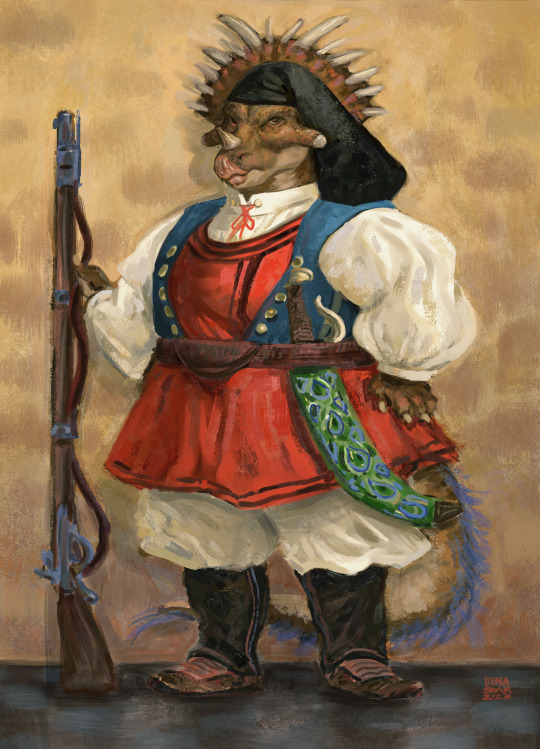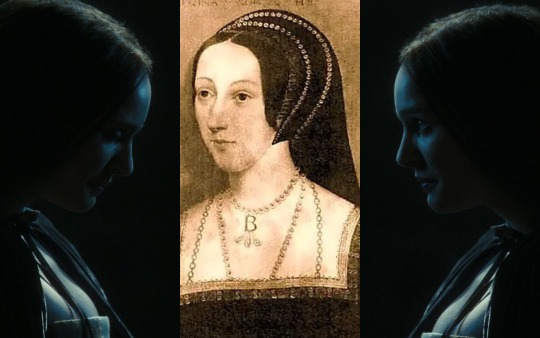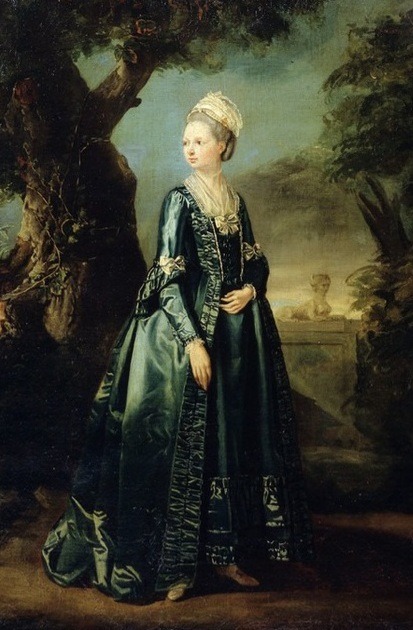#portraits full length
Explore tagged Tumblr posts
Text

Ended up bored and drew Agatha, still have nothing left for drawing yet. Still have a few things to finish up for projects, but finally finished up with most of them. Most of the rest of these are smaller projects and have some of the pieces in place, but most of them are still being worked on in a full piece, since there’s still very little time and there’s still lots of room left for other projects that I might be able to finish if there’s still time left for the rest of October .
Happy October!
#Full portraits#agatha harkness#visual arts#portraits villains#portraits witch#portraits full visuals#visual full length version#visual witchy portraits#Villain portraits#portraits visual witch#Portraits visual full body#portriats#portraits Agatha Harkness#Portraits witchy visuals#Visual arts Agatha#Witchy arts#Visual portrait arts#portrait full#full length art#full length portraits witch#portraits Harkness Agatha#Portraits Arts#visual effective arts#Visual functional portrait#visual functional full length and full body portrait#visual witch portraits full length#visual portrait#visual full body arts portrait#portraits Agatha#portraits full length
1 note
·
View note
Text

Portrait of Sophie Dorothea of Württemberg, Grand Duchess of Russia. By Alexander Roslin.
#alexander roslin#die romanows#house of romanov#zarenreich#tsardom of russia#sophie dorothea of würtemberg#grand duchess#full length portrait
269 notes
·
View notes
Text

painting. ceratopsian mercenary posing with rifle and sword, 2023
#art#painting#portrait#full length portrait#anthro#furry#dinosaur#saurian#ceratopsian#triceratops#anthro art#furry art#fantasy art#dynasoar5#ssohardd#rifle#sword#barretina#mercenary#2023#scalie
434 notes
·
View notes
Text

Conversation Piece at the Royal Lodge, Windsor
Artist: Sir James Gunn (Scottish, 1893-1964)
Date: c. 1950
Medium: Oil on canvas
Collection: National Portrait Gallery, United Kingdom
Description
The portrait shows King George VI, Queen Elizabeth, Princess Elizabeth (later Queen Elizabeth II), and her sister Princess Margaret. Throughout the Second World War, the Royal Family remained in London, and when Buckingham Palace received a direct hit the queen said, ‘now we can look the East End in the face’. Determination to share in the fate of the nation increased the monarchy’s popularity. In this post-war portrait, the informality of the presentation, for which the Queen was responsible, was entirely new. The setting is Royal Lodge, where the family’s life was informal. They are shown together at tea-time, a recognisable and very British occasion. Gunn, who had been chosen by the King and Queen for the commission, recalled the difficulty of placing the corgi, moving it about on the canvas in a paper cut-out. Commissioned to hang in a public collection, the work’s domestic character demonstrates changes in perceptions of the monarchy.
#group portrait#painting#british royal family#king george vi#queen elizabeth#princess elizaterh#princess margaret#full length#tea room#table#tablecloth#conversation piece#oil on canvas#portrait#artwork#fine art#oil painting#london#buckingham palace#tea set#chairs#man#women#scottish painter#national portrait gallery#candelabra#fireplace#pillows#upholstered chairs#20th century painting
37 notes
·
View notes
Text

Portrait of Mrs. C. (Lady with a White Shawl)
Artist: William Merritt Chase (American, 1849-1916)
Date: 1893
Medium: Oil on canvas
Collection: Pennsylvania Academy of Fine Arts, Philadelphia, PA, United States
Description
There has been much speculation about the identity of the subject of this portrait, whom Chase described as "the perfect type of American womanhood." It has been suggested that she was Chase's wife or perhaps Emily Jewell Clark, a wealthy art collector. The same unnamed woman appears in several of Chase's other undated paintings of the period: "The Opera Cloak (Grand Rapids Museum of Art, Michigan), Portrait of a Lady in White (private collection), and "A Lady in Evening Dress" (Museum of Fine Arts, Boston). One of the artist's favorite models during the early 1890s was Minnie Clark, also a frequent subject for the popular magazine illustrator Charles Dana Gibson, who used her features in creating his famous "Gibson Girl." Chase's use of only the subject's initial and a generic title for the Pennsylvania Academy's painting suggests a similar tendency to conceive of his portrait as an ideal type. "Portrait of Mrs. C." was one of sixteen works by Chase shown in the annual exhibition of 1894 at the Pennsylvania Academy. The portrait was also shown abroad in Paris (1899 and 1900) and in Berlin (1908). in such exhibitions , Chase's work was often hung next to the society portraits of John Singer Sargent because both artists were adept at suggesting the suavity and aloofness of the upper class with their elegant costumes and haughty poses.
#portrait#full length#female#standing#black dress#cream color shawl#american culture#interior#brown backround#william merritt chase#american painter#painting#fine art#oil on canvas#american art#19th century painting#artwork
31 notes
·
View notes
Text

Madeleine of France, Queen of Scotland (1520-1537).
#treaty of rouen#kingdom of scotland#house of stewart#rìogachd na h-alba#house of stuart#kinrick o scotland#full length portrait#royaume d’ecosse#royaume de france#maison de valois#Valois angoulême#summer queen#fille de france#queen consort#reine d’ecosse#madeleine of france#full-length portrait#house of valois#royalty
20 notes
·
View notes
Text

Robert Burns, 1759 - 1796
Artist: Alexander Nasmyth (Scottish, 1758 - 1840)
Title: Robert Burns, 1759 - 1796. Poet
Date: 1828
Medium: Oil on panel
Collection: National Galleries of Scotland, Edinburgh, Scotland
Robert Burns, Poet
Robert Burns (25 January 1759 – 21 July 1796), also known familiarly as Rabbie Burns, was a Scottish poet and lyricist. He is widely regarded as the national poet of Scotland and is celebrated worldwide. He is the best known of the poets who have written in the Scots language, although much of his writing is in a "light Scots dialect" of English, accessible to an audience beyond Scotland. He also wrote in standard English, and in these writings his political or civil commentary is often at its bluntest.
He is regarded as a pioneer of the Romantic movement, and after his death he became a great source of inspiration to the founders of both liberalism and socialism, and a cultural icon in Scotland and among the Scottish diaspora around the world. Celebration of his life and work became almost a national charismatic cult during the 19th and 20th centuries, and his influence has long been strong on Scottish literature. In 2009 he was chosen as the greatest Scot by the Scottish public in a vote run by Scottish television channel STV.
As well as making original compositions, Burns also collected folk songs from across Scotland, often revising or adapting them. His poem (and song) "Auld Lang Syne" is often sung at Hogmanay (the last day of the year), and "Scots Wha Hae" served for a long time as an unofficial national anthem of the country. Other poems and songs of Burns that remain well known across the world today include "A Red, Red Rose", "A Man's a Man for A' That", "To a Louse", "To a Mouse", "The Battle of Sherramuir", "Tam o' Shanter" and "Ae Fond Kiss".
#portrait#poet#robert burns#full length#landscape#painting#oil on panel#fine art#scottish poet#literature#writing#costume#boots#hat#coat#bridge#horizon#scottish liricyst#writing and literature#alexander nasmyth#scottish painter#19th century painting#scottish art#scottish culture#artwork#oil painting#national galleries of scotland
15 notes
·
View notes
Text

"By comparison with numerous ‘workshop’ versions, this rediscovered print from an apparently lost portrait of Anne Boleyn has every appearance of an authentic likeness, with its claim to represent Anne supported by Sir Roy Strong’s Tudor and Jacobean iconography and Eric Ives’s work in establishing a link between the portrait style and the gold and enamel image in the ‘Queen Elizabeth’s ring’, currently held by the Trustees of Chequers. Two copies of the print have so far emerged – one revealing the inscription near the top: ANNA BOLINA UXOR HVIII, perhaps added at a later date, and the other, of lesser quality, showing a little more of the shadowed background to the portrait and of the sitter’s wide black sleeves. It would not appear that the portrait is by Holbein. But in style and pose it does correspond closely to other contemporary female paintings by the German artist, Joos van Cleve, particularly his 1530 portrait of Eleanor, Queen of France (below).
[...] It is further significant that its sitter’s features, unlike those of other ‘workshop’ copies, bear close comparison with the Holbein ‘Anne Boleyn’ drawing in the British Museum, which has been and is still disputed as a likeness. With the ‘Van Cleve’ portrait reversed and the two images set side by side, the lines of forehead, cheek and chin appear virtually identical. The long, narrow jawline – also evident in portraits of Anne’s daughter, Elizabeth, and of her Howard and Carey relatives – is accentuated in the painting by the (invisibly narrow) ribbon which holds the French crépine head-dress in place. The shapes of the nose, mouth and brows, a little flattered in the painting, are essentially similar; while something indefinable in the expression of the dark eyes establishes a common likeness.

Moreover, there are good reasons for supposing that Van Cleve had the opportunity to paint Anne Boleyn in 1532. His well attested portrait of Henry VIII has been dated for the early 1530s and it has been suggested that Van Cleve came to England for the commission. According to the Royal Collection Trust, this portrait ‘may have been painted to commemorate his visit to Calais in 1532’. In fact, it is more likely that the King sat for the artist in Calais or Boulogne during the visit itself; and it follows that a portrait of Anne Boleyn by Van Cleve could also have been undertaken while she was there with him. It is known that Van Cleve was summoned to work at the French court by François I in the early 1530s, and the 32 days Henry and Anne spent in France in the autumn of 1532 would have allowed ample time for preliminary sketches, if not for completed portraits. The question of how a portrait of Anne Boleyn, sketched in 1532 and perhaps completed in time for her coronation in 1533, survived her disgrace and death in 1536, when other images of her were deliberately destroyed, might be explained by the fact that artists were frequently required to undertake multiple versions of royal portraits. Van Cleve was known for his ‘impressive studio organisation and collaboration’, and at least two versions of his portrait of Eleanor of France survive, wearing different costumes and jewellery. There are also two copies of Henry VIII’s portrait by Van Cleve, both of good quality, in the Royal Collection and that of Burghley House. If Anne Boleyn did sit for Van Cleve in Calais, one would expect official versions of the portrait to feature jewellery obtained for her from Katherine of Aragon in time for the French visit; (e.g. the jewelled cross with pendant pearl in Katherine’s miniature by Lucas Horenbout, and worn successively by Anne in her portrait medal of 1534, Queen Jane in the Whitehall Mural and by Catherine Parr in another Horenbout miniature.) Moreover, if the one surviving original portrait of Anne features a symbolically initialled ‘B’ pendant – with B being for Boleyn, rather than A for Anne – it was very possibly ordered by her father, Thomas Boleyn, for his portrait gallery at Hever, where a later copy hangs today. In similar circumstances, Edward Seymour commissioned his own portrait of his sister Jane. Nor is it hard to imagine a plausible chain of ownership for such a survival – from Thomas Boleyn’s death in 1539 – through Anna of Cleves, who gained Hever Castle and its contents as a part of her divorce settlement in 1541 – to her executor, Henry Fitzalan, who had charge of her effects on Anna’s death in 1557 – to his son-in-law, John, Baron Lumley, who inherited Fitzalan’s paintings in 1580 and included a likeness of Anne Boleyn in his inventory of 1590. It is known that Anna of Cleves personally occupied Hever Castle and would have been familiar with its paintings. If she had decided to sell a portrait of her disgraced predecessor by her countryman, Van Cleve – as a notable art collector, her friend Henry Fitzalan, Earl of Arundel would have been an obvious buyer. Alternatively, if she’d left the painting for his disposal as her executor, he’d surely have taken the opportunity to acquire it, having known Anne Boleyn personally and accompanied her to Calais in 1532. On Henry Fitzalan’s death, his art collection was merged with that of his son-in-law and heir, John, Baron Lumley, which a decade later certainly did include a portrait of Anne Boleyn. The fact that the portrait in the Lumley Inventory of 1590 is described as ‘full-length’ would not have made it unusual (Queens Jane Seymour and Catherine Parr were both painted full-length) or incompatible with other commissions for Joos van Cleve’s studio. We now know that the Lumley portrait was cut down at a later date; and if the rediscovered head-and-shoulders print is amalgamated with another three-quarter-length female portrait by Van Cleve (as below), some idea can be gained of how such a painting might originally have appeared."
#i loooove this one#anne boleyn#@ god drop the full length portrait reveal if you'd like to shift me from atheism. tick tock.#richard masefield
33 notes
·
View notes
Text

Anthony van Dyck (Flemish,1599 - 1641) • Lord John Stuart and his Brother, Lord Bernard Stuart • 1638
We want to be underwear models but Mother will not allow us to dial the Time Machine to the 21st century.
#portrait#art#painting#royal portraits#art history#fine art#anthony van dyck#double portrait#full length portrait#the resplendent outfit#fashion history#flemish painter#baroque art#baroque male fashion#men's fashion 1600s#art humor
26 notes
·
View notes
Text

The Peacemakers
Artist: George Peter Alexander Healy (American, 1813-1894)
Date: 1868
Medium: Oil on canvas
Collection: White House, Washington, DC, United States
Description
The title is the only clue to the import of this solemn painting, a prelude to the end of the Civil War. Seated in the after cabin of the Union steamer River Queen are Maj. Gen. William T. Sherman, Lt. Gen. Ulysses S. Grant, President Abraham Lincoln, and Rear Adm. David D. Porter. Less than a week before the fall of Petersburg, Virginia, the four men met to discuss the nature of the peace terms to follow. The figures in The Peacemakers seem strangely isolated. Meaning is embodied in their persons rather than their actions. Here, the separateness of each man is reinforced by the paneling and windows behind him. All heads are on the vertical, save Lincoln's. His inturned pose and brooding expression serve to differentiate him further. Behind him glows a rainbow, emblematic of the approaching peace.
#history#peace makers#19th century art#peter alexander healy#american art#white house#william t sherman#ulysses s grant#president abraham lincoln#david d porter#portrait#oil painting#historical depiction#painting#oil on canvas#american culture#artwork#fine art#interior scene#men#full length#seated#chairs#windows#conversation piece
11 notes
·
View notes
Text

Portrait of Natalia Alexeievna of Russia (1755-1776), wife of Paul I of Russia. By Peter Falconet.
#peter falconet#die romanows#house of romanov#zarenreich#tsardom of russia#grand duchess#natalia alexeievna#full length portrait#full-length portrait#pushkin museum of fine arts
79 notes
·
View notes
Text

Duke Albert V (1528-1579) of Bavaria with a Lion
Artist: Hans Mielich (German, (1516-1573)
Date:1556
Medium: Oil painting
Collection: Kunsthistorisches Museum Vienna, Austria
Albert V, Duke of Bavaria
Albert V (German: Albrecht V.) (29 February 1528 – 24 October 1579) was Duke of Bavaria from 1550 until his death. He was born in Munich to William IV and Maria Jacobäa of Baden.
Albert was educated at Ingolstadt by Catholic teachers. On 4 July 1546 he married Anna of Austria, a daughter of Ferdinand I, Holy Roman Emperor and Anna of Bohemia and Hungary (1503–1547), daughter of King Ladislaus II of Bohemia and Hungary and his wife Anne de Foix. The union was designed to end the political rivalry between Austria and Bavaria. In 1550, Albert succeeded his father as duke of Bavaria.
#portrait#painting#full length#standing#fine art#german culture#albert v#duke of bavaria#german history#interior#costume#lion#dog#hans mielich#german painter#oil painting#german art#16th century painting#european art#artwork
32 notes
·
View notes
Text

Sir Robert Shirley (1581-1628)
Artist: Sir Anthony Van Dyck (Flemish, 1599-London)
Date: 1622
Medium: Oil on canvas
Collection: National Trust Collections, United Kingdom
Description
This fascinating portrait, dressed in Persian clothes, was painted in Rome in 1622. Robert Shirley was an adventurer, who from 1608 served as ambassador to the Persian shah Abbas the Great (1571–1629) and adopted Persian customs. Teresia Shirley was Circassian (people from the north-east shore of the Black Sea in Russia) and is shown seated demurely against a view of Rome. The painter, Sir Anthony van Dyck (1599–1641), may have been attracted to painting these sitters partly as a result of the stunning visual effect of their lavish clothes.
#portrait#full length#oil on canvas#sir robert shirley#persian clothes#flemish art#view of rome#man#oriental costume#turban#english traveler and adventurer#fine art#oil painting#artwork#sir anthony van dyck#flemish painter#european art#17th century painting#national trust collections
21 notes
·
View notes
Text

Empress Irene (750/756-803) by Herbert Norris.
#herbert norris#empress irene#irene of athens#augusta#empress of the romans#byzantine empire#empress consort#Ειρήνη η Αθηναία#full length portrait#Byzantine regent#Σαρανταπήχαινα#Sarantapechos#Σαραντάπηχος#full-length portrait#Isaurian dynasty#Βασιλεία Ῥωμαίων#Byzantine Iconoclasm#royalty
21 notes
·
View notes
Photo

The Morning Fire by Roberto Pazzi
#teenage#boys#tradition#fire#sitting#warming#up#cattle#camp#mundari#africa#south#sudan#children#people#portrait#culture#two#persons#full#length#cloud#looking#camera#african#ethnicity#outdoors#tribal#nikon#photography
7 notes
·
View notes
Text

Diego Velazquez 1599-1660
Cardinal-Infante Ferdinand of Austria, in Hunting Dress 1632-1634 ca.
Museo Nacional del Prado, Madrid
42 notes
·
View notes